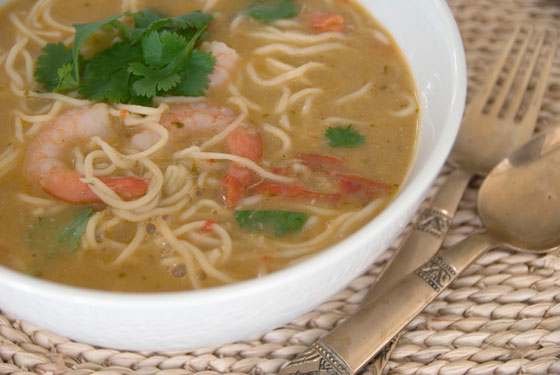
Virgil Evetts
We worry so much about the flavours of our food, about the seasoning, the level of spice, the umami. La-de-dah, but it’s very rare to hear anyone fret about texture. Well, maybe the ladies of the CWI, with their cake-crumb fascism, but mostly as a topic it doesn’t get much of a look in. Not here in the homogenised West anyway. Elsewhere it’s taken very seriously- in Japan for example there are dishes that exist purely as textural counterpoints to others.
Personally I find texture every bit as important as flavour. If it wasn’t we’d all quite happily subsist on tasty gloop. But moreover, texture can have a strong influence on how we perceive flavours: the more finely spices are ground, the greater their combined surface area for flavour extraction. Some foods, like pesto al Genovese for example, simply don’t feel or taste finished unless they’ve been ground to a precise point between coarse and smooth, when the oil, cheese, nuts and plant matter gel.
But it’s one thing to get all high and mighty about texture, and another one altogether to have any real control over the matter. One of my greatest bug-bears ( I have a great many) for many years has been the ineffectiveness of conventional food processors and blenders for making Asian spice and curry pastes. Every time I made a red curry, korma, or Laksa paste in my trusty little Kenwood, the finished product was good, but never great. My Cuisineart did no better. The flavours were there all right- but somehow out of order, and the texture was always just that little bit too…imprecise. The latter might not seem like much, but a mouthful of inadequately ground lemon grass and galangal isn’t pleasant. Have you tried picking lemon grass fibres out of your teeth? The little bastards snap every time you manage to locate one with your big dullard finger-tweezers, leaving behind a tiny little stump which worries your tongue for days. Shudder.
Traditionally, curry pastes were rendered svelte in a stone mortar and pestle, but I suspect you need to learn this skill at your mother’s knee, and build up some very muscular wrists too. I have it on good authority that the mortar and pestle is slowly but surely disappearing from the Asian peasant kitchens anyway, in favour of various plug-in appliances of the wizz-wizz-chop-chop kind. No doubt many a food commentator will lament this as the sad passing of a simpler age, but the truth is, it’s not much fun being a peasant. There is nothing rustic and charming about the endless toil and dysentery, so I think we should forgive any aspirations of an easier life.
On trips to Asia over the last decade or so I’d noticed one particular appliance in restaurant kitchens over and over again. A very ugly, dated looking sort of food processor-thing, with lots of connectable jars and jugs, and a motor that sounded like it had been salvaged from a downed spitfire. The machine always seemed to be central spoke of the kitchen, and damn, did it turn out a smooth paste. Eventually I learned that the ubiquitous monster was a Sumeet “mixie”, an India-made appliance designed specifically for the rigours of the Asian kitchen. From then on it became my driving obsession – I had to possess one.
Now, I find it doesn’t pay to let ones obsessions fester. They get in the way of useful thoughts and are best satisfied or dismissed outright. I’ve never been big on the latter, so I kept TradeMe on the lookout with a Sumeet ‘saved search,’ and eventually secured purchase at a rock-bottom price. It’s ugly. It’s big and it’s terrifyingly noisy, but it works like a dream. Depending on what blade I fit, or what speed I set it too I can turn out curry pastes smoother than whipped cream, or coconut chutneys like spicy sour butter.
The difference in a finished dish is profound and disarming. Flavours fall in to harmonious balance, sauces emulsify, and most importantly lemon grass fibres are neutralised entirely. I may rally against the tide of kitchen clutter, but if you’re serious about your Asian food, an Asian Spice grinder or ‘mixie,’ (there are several brands available if you hunt around a bit) is one game-changing and essential piece of kit.




I agree, Virgil, that texture is very important. But what I really want to know is: what is the dish in the photo? It looks fantastic and I’d love to have some. Right now.
I am with you completely on texture. I think that is why I enjoy South East Asian food so much. The contrast of soft noodles, crunchy nuts, snap of sprouts and the crisp shallots on top is the perfect contrast to the other vegetables and meat.
I rarely make curry pastes from scratch but find the coq brand is great for thai red and green pastes. Yellow I tend to make but not sure why…
I want this. I WANT THIS.